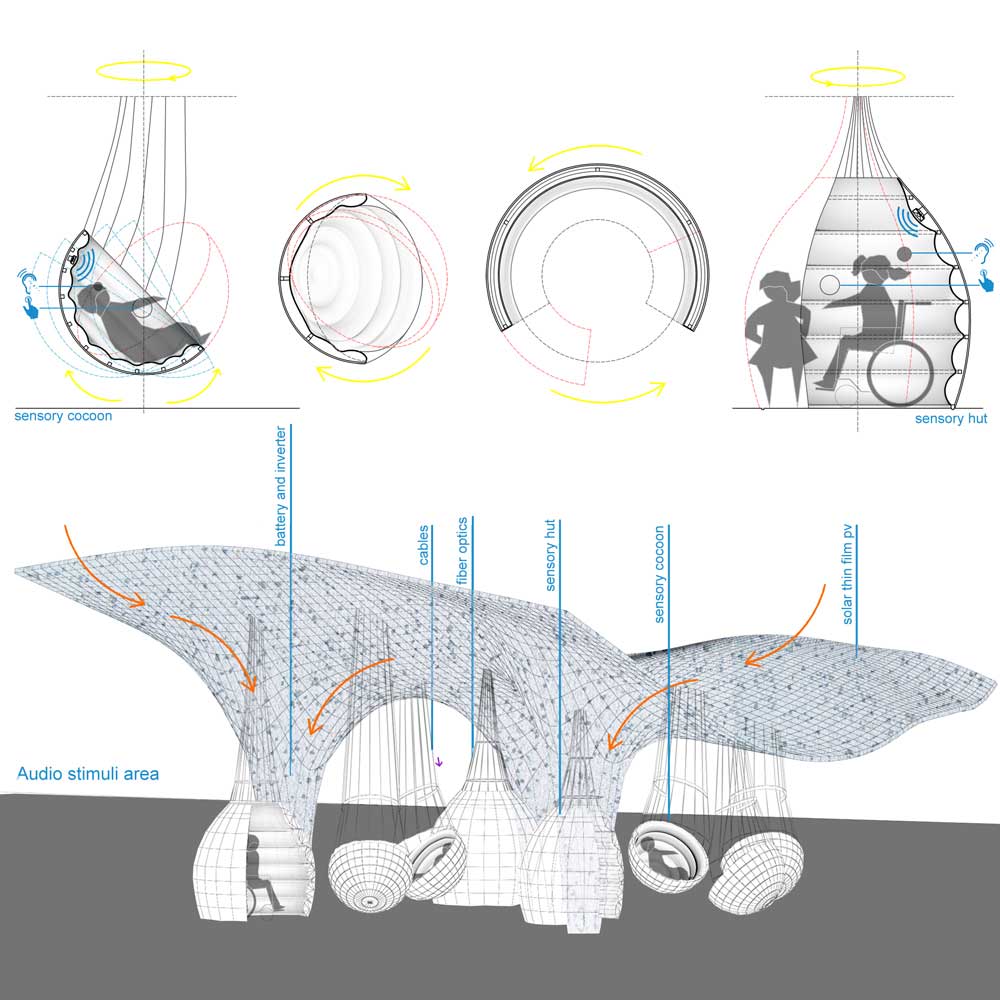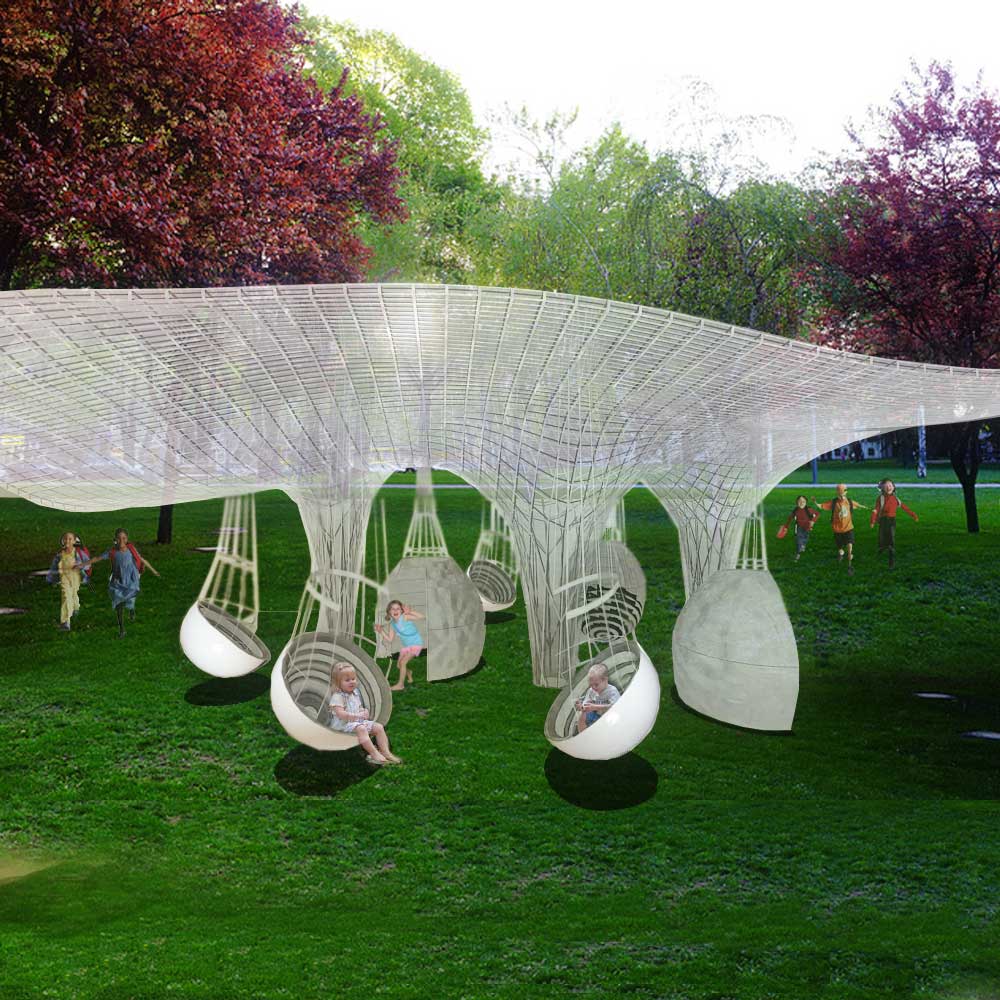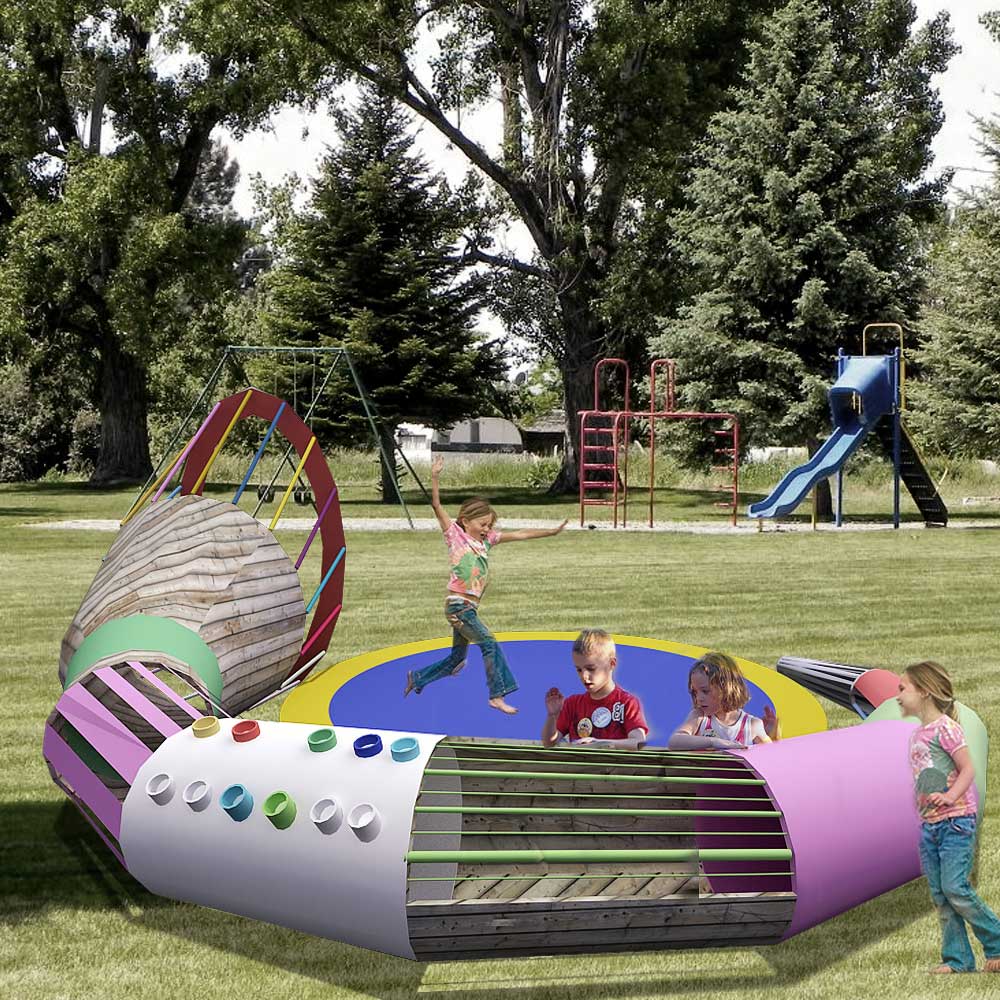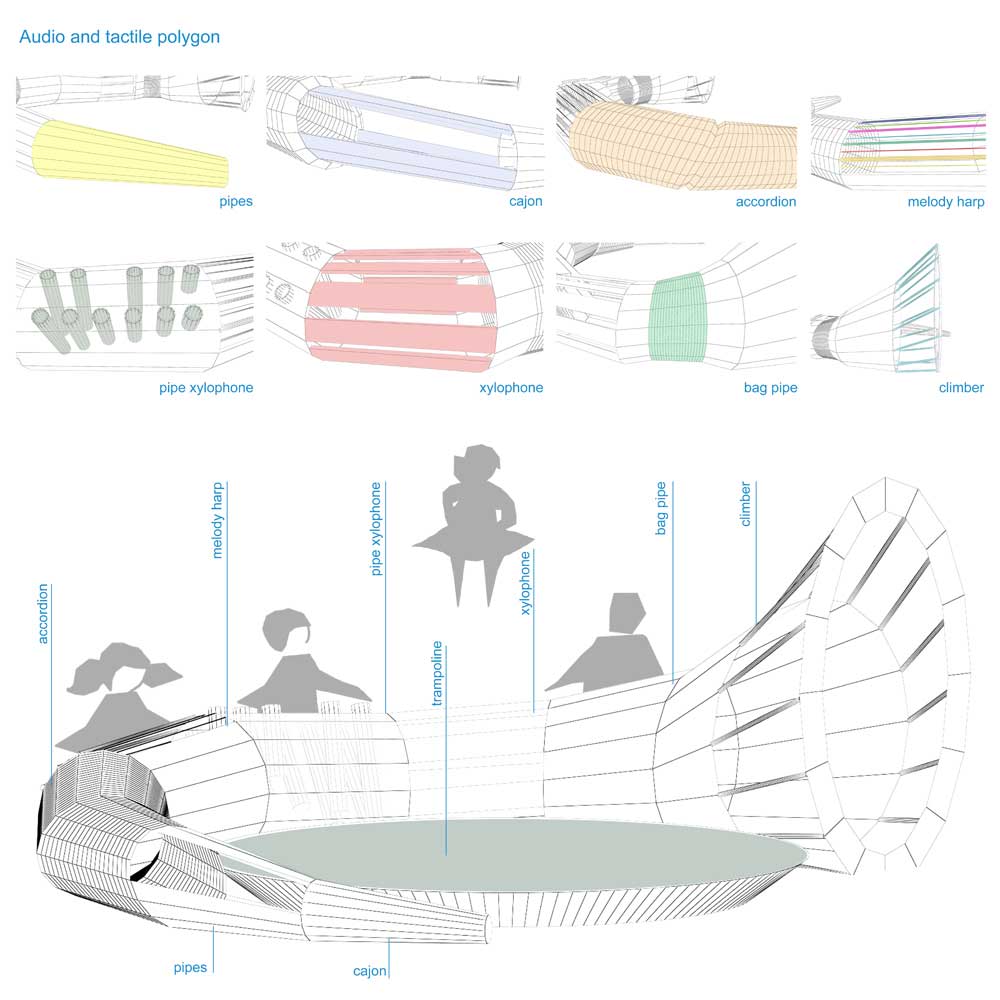Sensory Playground
Project Details
- Type: Competition
- About: Metropolis Next Generation Design Competition 2012
- Credits: Danica Marinković, Jelena Lučić, Ivan Gradišar, Katarina Ristić
Sensory Playground transforms any playground, urban space, or park into a unique experience. Designed specifically for people with autism and other special needs, this playground empowers individuals, promotes social interaction and inclusion, activates all the senses, and, most importantly, adds a fun factor. Therefore, it stands out as a valuable addition.
One key issue in urban life is the exclusion of people with special needs. Cities move quickly, and people with special needs often feel isolated. By providing a space for sensory activity, Sensory Playground helps people interact socially and creatively. Consequently, it bridges gaps and fosters a more inclusive environment.
Audio Stimuli Area: A Space for Calm
The Audio Stimuli Area caters to those who prefer less activity. Visitors can relax and enjoy their surroundings. Additionally, a hut and cocoon play subtle nature sounds and special music crafted for people with autism. This feature creates a soothing atmosphere.
Optical Exploration Area: Engaging the Visual Senses
The Optical Exploration Area stimulates visual senses, providing a captivating and soothing experience. This area also acts as a visual retreat, offering a peaceful environment for visitors.
Audio and Tactile Polygon: Encouraging Active Play
The Audio and Tactile Polygon engages active users with seven different musical instruments that emit harmonious sounds. It also includes tactile surfaces and areas for climbing and bouncing on a small trampoline. As a result, it encourages both physical and sensory engagement.
The designers constructed the primary structure of Sensory Playground using standardized metal rods and loops, chosen for their cradle-to-cradle properties. This choice ensures environmental responsibility throughout the playground’s life cycle. Thus, the design supports sustainability and eco-friendliness.
A Sensory Experience for All
In conclusion, Sensory Playground offers a true exploration of the senses. Visitors experience vibrant colors, harmonious sounds, varied textures, and opportunities for physical activity. Ultimately, this innovative space is not just a playground; it reveals a model of creativity and accessibility that brings joy and inclusion to all.

Audio Stimuli Area

The Audio Stimuli Area is a space where people with autism and children can enjoy more private and relaxing time. It includes a Sensory Hut for people and wheelchair users that plays music and nature sounds, rotates on its axis and provides a place of calm and security.
The Sensory Coccon is specially designed for people with autism, playing music at specific brainwave frequencies to help reduce the symptoms of autism and provide a space for them to isolate and cocoon in the way that is recommended for them.
In addition, a roof over the audio stimulation area incorporates solar thin
film photovoltaic power, which inverts AC to AC-DC current and buttery to store the energy for speakers and night light.
Night light is emitted through optical fibre to create a dreamy and strong visual impact when the sun is not shining and during night time.

Rendering of the Audio Stimuli Area in a park showing the versatile design of the sensory hut and cocoon. The hut is accessible to people in wheelchairs and can rotate on its axis, while the cocoon provides a gently enclosed space suitable for people with autism and can also be suspended and rotated on its axis.
Optical Exploration Lab

The Optical Exploration Lab includes a series of different lenses that change the perception of the surrounding space, introducing a concept of healthy, natural variety through play. This space is designed for multi-users, for both wheelchair users, children and adults.The lenses on rods are adjustable, with rotation from left to right, up and down and rotation around its axis.This movement will give flexibility for users to play with their perception and vision of their surroundings.
The lenses contain 4 groups of lenses: colour filters, mirror reflections, soft lenses in convex and concave shapes and a variety of different types of perforations.

Rendering of the Optical Exploration Lab is accessible to people with disabilities across a range of ages. Changing the number of lenses creates different visual effects within the environment, introducing the notion of change that mirrors real life experiences.
Audio And Tactile Polygon

Audio and Tactile Polygon embodies a variety of tactile surfaces and adorable instruments that anyone can play, from people in wheelchairs, from people with disabilities, from people with autism, young and old alike. The horn consists of different heights and the tail of the structure resembles a pipe which produces the highest peached sound. Another part that is close to the ground can be struck or kicked and produces a percussion sound like a cajon instrument. Another instrument is the accordion that can be held with one or both hands and pushed back down to produce a harmonious sound. Instrument with string resembling a Melody Harp is an instrument that cannot be played in disharmony and rotation around its axis. This movement will give flexibility for users to play with their perception and vision of their surroundings.
The lenses contain 4 groups of lenses: colour filters, mirror reflections, soft lenses in convex and concave shapes and a variety of different types of perforations.

Rendering of the Audio and Tactile Polygon can be used by very little children to adults. It contains a variety of instrument, tactile surfaces and surfaces for physical action.
